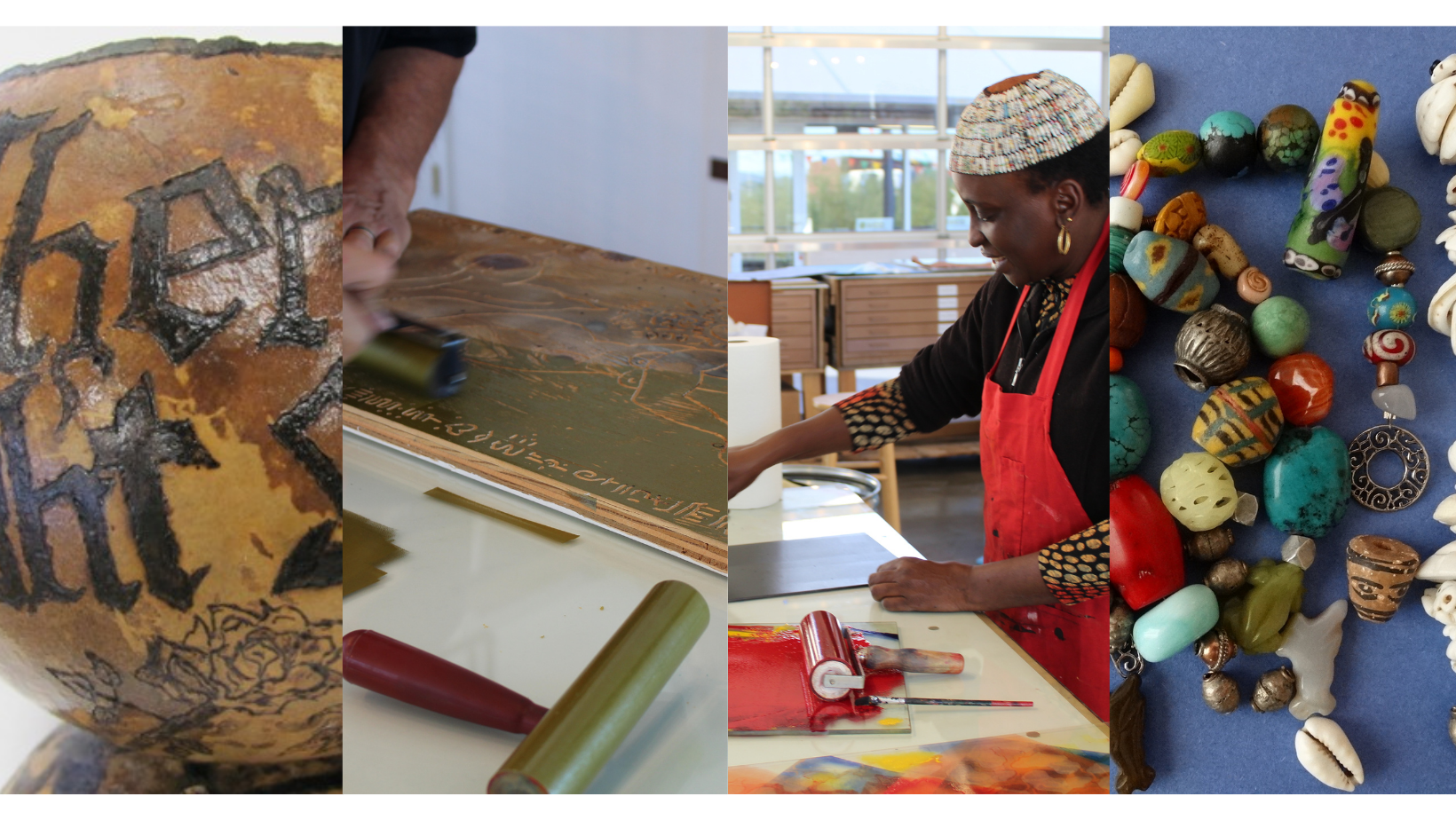Artist Workshops
Our printmaking workshops provide opportunities for advanced artists (technique experience required) to experiment with new methods while learning from master printers. Emerging and established local artists can attend Xico printmaking workshops and demonstrations, expanding their skills, techniques and knowledge. Workshops are held at the Xico Artist Studio, where we house our printing press. Techniques include monosilk, monoprint, etching, woodcut, linocut, and mixed media.
If you are an advanced artist and would like to attend our free artist workshops, please contact Janet Diaz @ j.diaz@xicoinc.org or 480.833.5875.
Novice artists can check out our full calendar of events to sign-up for beginning and intermediate workshops at Xico!
Printmaking Processes
The monoprint silkscreen process is a specialized process where the artist uses water-based inks to paint or apply the image directly onto the silkscreen. Once the image is applied, a color of ink is selected for the background. A small amount of ink is poured at the top of the silkscreen and is hand pulled with a squeegee. The rubber tipped squeegee forces the ink through the mesh, transferring the image onto the paper. In the process, artists may work with a variety of materials e.g. pastel crayons, stencils, ink on acetate, and photo emulsion.
Alternatively, we also teach the monoprint process on plexiglass. A print is achieved by creating the image on an plexiglass plate with ink. The plate and damp paper are run through an etching press, which applies pressure to transfer the image to paper. Traditionally, only one print is made through this process since the inks or paints are applied directly to the plate, hence its name “Monoprint”.
We also offer a variety of relief printing processes. Relief printing is a family of printing methods where a printing block, plate or matrix has had ink applied to its surface. The matrix in relief printing is created by starting with a flat original surface and then removing (carving) away areas intended to print white. The remaining areas of the original surface receive the ink. The relief family of techniques includes woodcut, metalcut, wood engraving, relief etching, linocut, rubber stamp, foam printing, potato printing, and some types of collagraph, all of which are able to be printed on our etching press.
Coming Soon….. Lithography
Lithography is a method of printing originally based on the immiscibility of oil and water. This process relies on stone printing(lithographic limestone) or a metal plate with a smooth surface. Invented in 1796 by German author and actor Alois Senefelder as a cheap method of publishing theatrical works, Lithography can be used to print text or artwork. Traditional lithography is done by drawing an image with oil, fat, or wax onto the surface of a smooth plate/stone. The stone is then treated with a mixture of acid and gum arabic, etching the portions of the stone that are not protected by the grease-based image. When the stone is subsequently moistened, these etched areas retain water; an oil-based ink is then applied to repel the water, sticking only to the original drawing. When ran through the press the ink is transferred to a blank paper sheet, producing a printed page.





